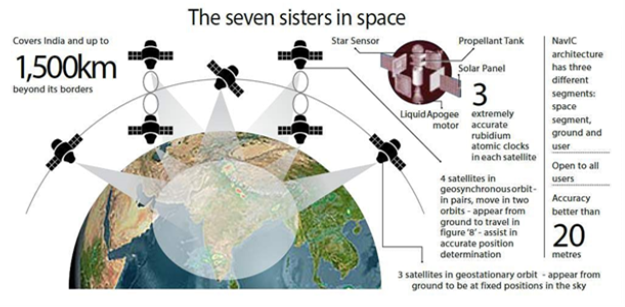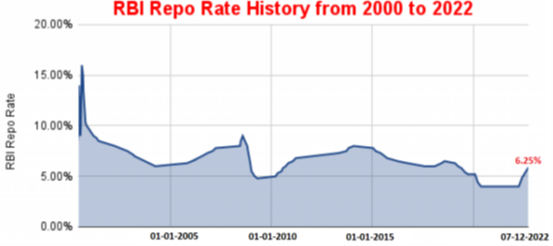Tuesday, 13th December 2022
Expand the food safety net without any more delay
In News: Expanding PDS coverage to account for the increase in population since 2011 is a no-brainer; the Government’s resistance to implementing a Supreme Court of India direction is baffling
Exam View: Current Framework for Food Security in India, Challenges Related to Food Security in India, Recent Government Initiatives Related to Food Security. Green Revolution, Food and Agricultural Organization (FAO), Food Corporation of India (FCI), Public Distribution System.
Food Security: The Food and Agricultural Organization (FAO) states that food security emerges when all people at all times have physical and economic access to sufficient, safe and nutritious food to meet their dietary needs and food preferences for an active and healthy life. Food security has three important and closely related components, which are the availability, accessibility and affordability of food.
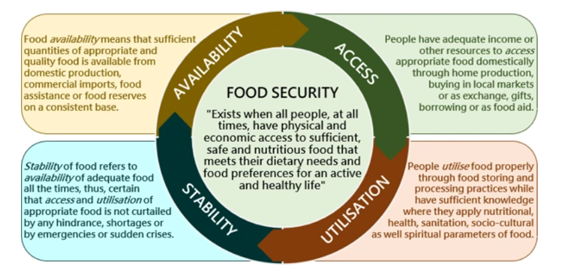
The Green Revolution initiated in the late 1960s was a historic watershed that transformed the Food Security situation in India. It tripled food grain production over the next three or four decades and consequently reduced by over 50% both the levels of food insecurity and poverty in the country, this was achieved in spite of the increase in population during the period.
The country succeeded in the laudable task of becoming a food self-sufficient Nation, at least at the macro level. But with rising land degradation, loss of soil fertility and water logging, climate change, and global supply chain disruption (Russia-Ukraine War) giving rise to the challenges faced by the farming community. The fall in ground water levels is adding to the problem. Therefore, India needs to examine these issues holistically in order to maintain food sustainability.
Food Security Framework in India:
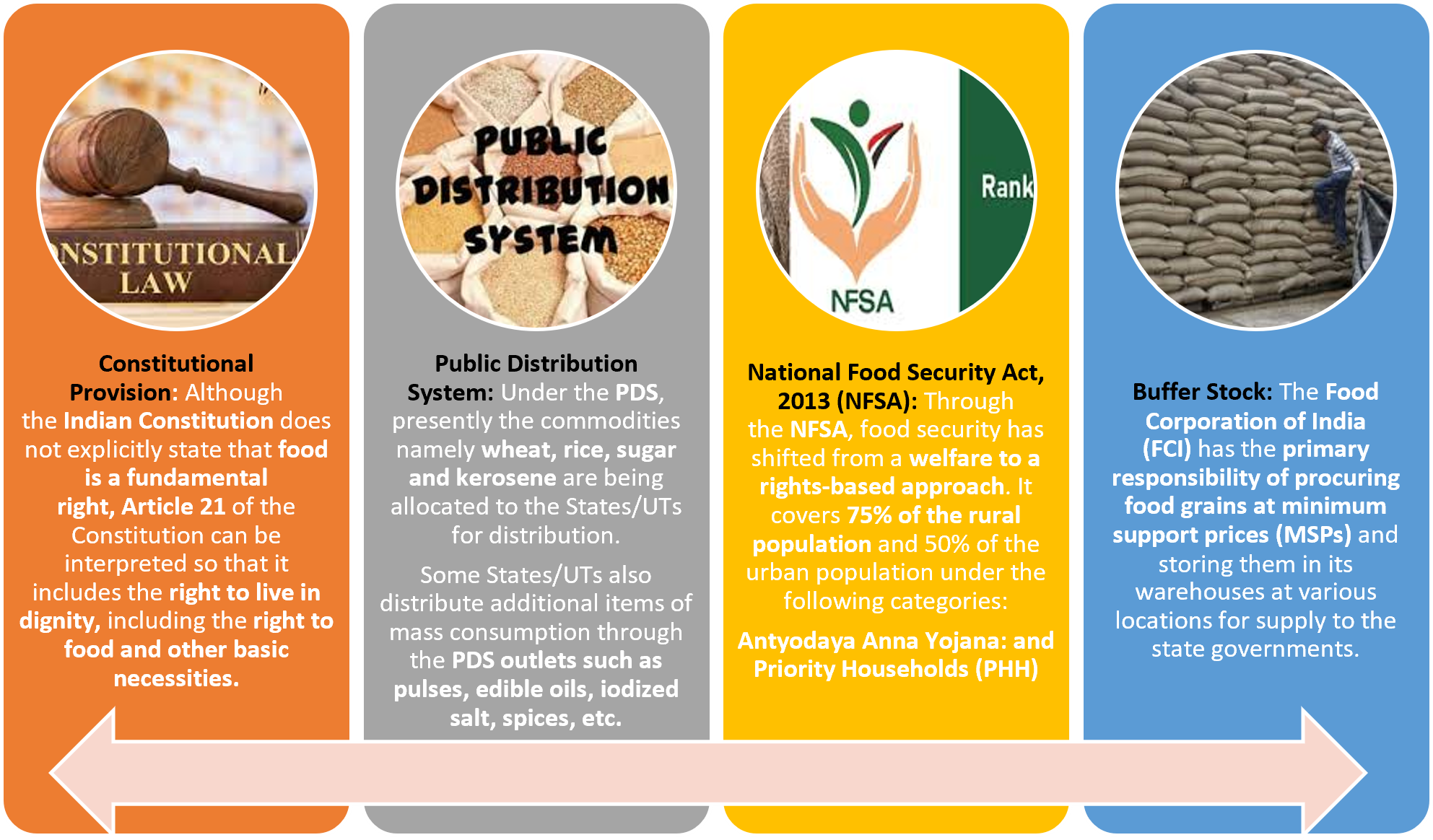
Challenges Related to Food Security in India
- Climate Change: United Nations called out climate change, extreme weather events as the key factors driving growing food insecurity. Increased temperatures, weather variability, invasive crops and pests, and more frequent extreme weather events have detrimental effects on farming – from diminishing agricultural yields, to weakening the nutritional quality of produce on farms, to reducing farmer incomes.
- Market Price volatility: The concept of globalisation has given more openness to agricultural commerce, but it is unable to assure more stable market pricing. The lack of remunerative prices for end goods, distressed sales, high cultivation costs combined with inappropriate market prices act as a barrier in the path of food security.
- No Strict Food Management Policy: There is no strict management policy for food security in India, and the Public Distribution System is prone to leaks and diversion, errors in inclusion and exclusion, fake and bogus ration cards, and a weak grievance redress and social audit system.
- Waterlogging Issue: Excessive irrigation causes waterlogging that is often accompanied by soil salinity as waterlogged soils prevent leaching of the salts imported by the irrigation water. The presence of waterlogged soil hinders plant growth and reduces agricultural productivity.
- Pest and Weed Attacks: Over the past 15 years, India has experienced more than 10 major invasive pest and weed attacks. Fall Armyworm (Pest) destroyed nearly all the maize crop in India in 2018, forcing India to import maize in 2019. Rajasthan and Gujarat were also affected by locust attacks in 2020.
- Focus to Biofuels: The growth of the biofuel market has reduced the land used for growing food crops. Also, massive quantities of water are required for proper irrigation of biofuel crops as well as to manufacture the fuel, which strain local and regional water resources, that is the essence of food security.
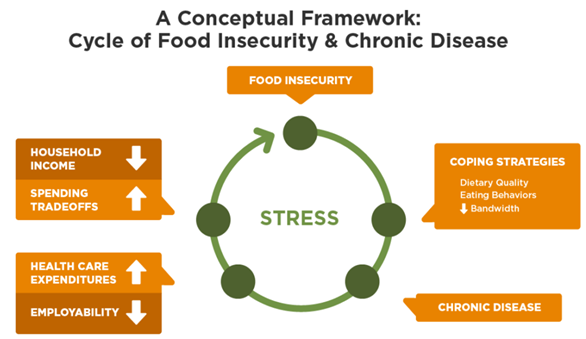
Way Forward:
- Infrastructural Development through PPP: The government should prioritise development of warehouses, cold storage facilities, farm to factory corridors, and competitive market facilities. Encouragement of the PPP model in agriculture will result in speedier infrastructure development.
- Transparency on Food stocks: The Indian government could ensure more transparency on food stocks regulation in the private sector. For that, there is a need to set restrictions on the reserves that the private sector can hold, as they often tend to hoard food stocks to later sell at a profit.
- One Nation One Ration Card Scheme: The ‘one nation one ration card’ scheme should be operationalised through the proper issuance of universal ration cards to individuals seeking food grain so that the PDS can be accessed at any geographical location in the country.
- Sustainable Agriculture: Sustainable agriculture practices such as crop rotation, mixed cropping with pulses, using biofertilizers, limiting the use of pesticides and integrated pest management must be encouraged and promoted.
- Incentivising Climate-Resilient Crops: Investment is needed for the development and distribution of climate-resilient crops that can handle temperature variation and precipitation fluctuations.
- Agricultural Diplomacy: India can provide support to other developing countries in Africa and Asia through technology partnerships, joint research in promoting drought-resistant crops, promoting climate-smart agriculture, thereby establishing India as a major player of the Global South.
Ref: The Hindu
Why winters in Delhi are not wintry enough
In News
This year may see a warm winter in the northwest and northeast India, but many parts of peninsular India will see a relatively colder winter, as per India Metrological Department (IMD).
About the news:
- Above-normal maximum and minimum temperatures are expected over many parts of northwest India and most parts of northeast India during this winter season.
- The frequency of days with maximum and minimum temperatures about 2 to 4 degrees C above normal will be higher during the next 3 months.
- Warmer than average winter for the northern parts of the country was despite La Nina conditions because La Nina is one of the factors, which determines temperatures. La Nina means more cyclonic disturbances during the period, but there was only one depression due to active Madden–Julian oscillation (MJO), which subdued cyclonic activity.
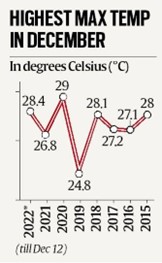
What are the reasons for warmer winters?

- The subdued effect of Western disturbance activity may lead to less cloudiness and both above-normal day and night temperatures
- Penetration of easterly winds from the Bay of Bengal is another reason for warmer winters. It will lead to an increase in the minimum temperature but will not necessarily yield rainfall
- The daytime temperature is warmer since there are no clouds. Winds are consistently northwesterly. There has been very little fog as well this December leading to higher daytime temperatures.
What are the impacts of warmer winters?
- Warmer winter impacts the wheat crop and its extent depends on the dynamic behaviour of the weather and the stages of the plant life cycle.
- Warmer winter also means a reduced period of glaciation resulting in an increased volume of water in the Himalayan rivers post-winters.
What are the western disturbances?
Western disturbances are extratropical storms originating in the Mediterranean region that brings sudden winter rain to the northern parts of the Indian subcontinent.
- It is a non-monsoonal precipitation pattern driven by the westerlies.
- The moisture in these storms usually originates over the Mediterranean Sea, the Caspian Sea and the Black Sea.
- Western disturbances brings winter and pre-monsoon rain and is important for the development of the Rabi crop in the Northern subcontinent.
- Sometimes Western disturbances can cause extreme weather events like floods, flash floods, landslides, dust storms, hail storms, and cold waves.
Japanese firm’s lunar lander on way to the moon
Why in news?
- Recently, a Japanese space firm, ispace Inc., used a SpaceX Falcon 9 rocket to launch its own private lander, the M1, to the Moon as part of its HAKUTO-R mission.
- It is the first lunar mission ever carried out by Japan and the first of its sort by a private company.
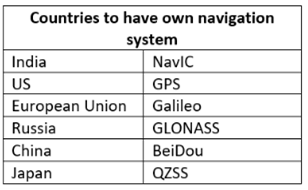

Features
- It is taking a slow, low-energy course to the Moon, travelling 1.6 million kilometres (one million miles) from Earth before looping back and reaching a projected and planned landing by the end of April.
- It is constructed in such a manner that it will consume the least amount of fuel in order to save money and leave more room for cargo.
Objective
- It is intended to look for water deposits before landing in the Atlas Crater, which is located in the northeastern region of the Moon's near side and is more than 87km (54 miles) broad and a little over 2km (1.2 miles) deep.
- Success on the mission would also mark an important turning point in US-Japan space collaboration at a time when China is becoming increasingly competitive and rides on Russian rockets are no longer accessible amid Russia's invasion of Ukraine.
- Japan is hoping to construct a permanently manned lunar colony by 2040 and has a deal with NASA to carry cargo to the Moon starting in 2025.
Other Lunar Mission
India: Chandrayaan- 1, 2 & 3
Global: Moon Mission (UAE), NASA’s Artemis Mission (USA), Lunar Evacuation System Assembly (USA), Chang’e-5 Mission (China)
Private Bill: PM-Led Panel for CEC Selection
In news
In the background of 'growing concern' with regard to the independence and autonomy of the Election Commission, a private member’s Bill has been introduced in Lok Sabha which seeks the formation of a high-level committee to select the Chief Election Commissioner(CEC) and the Election Commissioners(EC).
About the introduced Bill
- The Bill seeks the formation of a high-level committee headed by the Prime Minister and consisting of the Leader of the Opposition and the Chief Justice of India to select CEC and EC.
- It also seeks more power for the Election Commission to “regulate, monitor and superintend” the internal functioning of all political parties, including internal elections of all registered political parties.
- It envisages a fixed tenure of six years for CEC and EC, and should not be removed from office except in accordance with the procedure laid down for the removal of a Supreme Court Judge.
- Also, after retirement, they should not be eligible for any reappointment to any office under the Government of India, State Governments and the Constitution.
Private Member's Bill
- “Private member” refers to any Parliament member, including from the ruling coalition, who is not a Minister in the Union Cabinet; and Bills introduced in either House by such members are called “private members’ bills”.
- Private members can bring in bills on any subject, including those requiring constitutional amendments after it is scrutinised and approved by a committee before it is tabled in Parliament for consideration.
- Procedure
- The MP who wants to move a Private Member’s Bill has to give at least a month’s notice, for the House Secretariat to examine it for compliance with constitutional provisions and rules on legislation.
- While a government Bill can be introduced and discussed on any day, a private member’s bill is only introduced and discussed on Fridays.
- Also, its rejection by the House has no implication on the parliamentary confidence in the government or its resignation.
- No Private Member’s Bill has been passed by the Parliament since 1970, according to PRS Legislative Research.
- Only 14 private members’ bills have been passed by Parliament so far and six of them were passed in 1956 alone.
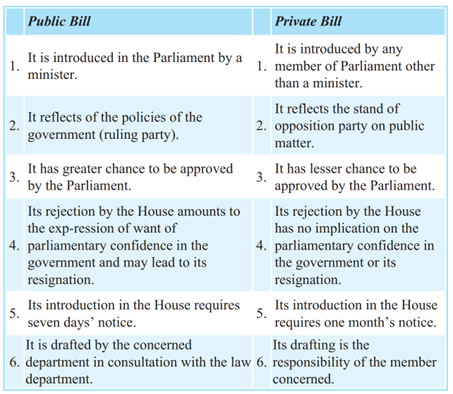
Source: News Article - The Indian Express
Image: Polity By Lakshikanth
Factors of Production - Edukemy Current Affairs
Context: Innovations in how the factors of production are used, affect their yield through profits, labour productivity or income streams.
- The factors of production are land, labor, capital and entrepreneurship.
- The combination of these factors determines the success or failure of the outcome.
- A key element of the factors of production is their scarcity.
- The availability, quality and costs of these factors affect costs of production, R&D spending and market potential.

- Land:
- includes the natural resources used to create a good or service.
- These can be renewable resources like forests or non-renewable resources like oil, gold or water.
- Labor:
- is the work done by the people in a workforce.
- It depends on the human capital, or the skills, knowledge, training and experience of these workers.
- Capital:
- refers to capital goods, or man-made resources, such as tools and infrastructure, used in the production of a good or service.
- It is not to be confused with money.
- Entrepreneurs:
- The people who combine the other factors of production – land, labor and capital – to generate profit.
- Entrepreneurial activity brings new ways of organizing land, capital and labor to produce new goods and services, through innovation.
Sources:
Image source : Federal Bank of St. Louis
CPI & WPI - Edukemy Current Affairs
Context: Retail inflation falls below 6% mark for the first time in 2022

- CPI
- The consumer price index (CPI) tracks the change in retail prices of goods and services which households purchase for their daily consumption.
- To measure inflation, economists estimate how much CPI has increased in terms of percentage change over the same period the previous year. CPI helps understand the real value of salaries, wages, and pensions, the purchasing power of the nation’s currency, and regulating rates.
- WPI
- The Wholesale Price Index (WPI) reflects changes in the average prices of goods at the wholesale level — that is, commodities sold in bulk and traded between businesses or entities rather than goods bought by consumers.
- WPI inspects movement in prices of goods that reflect supply and demand in industry, construction and manufacturing.
- The basket of WPI categorises commodities under three groups — primary articles, fuel and power & manufactured products.
- WPI is available on a weekly basis.
- Rise in WPI indicates inflationary pressure in the economy, and vice versa.
- Limitations: WPI does not consider the price of services, and it does not reflect the consumer price situation in the country.
Sources:
Image source: Financial Express
Mac Mohan Line - Edukemy Current Affairs
Context: Recently there was a face-off between India and China along the Line of Actual Control (LAC) in Tawang sector of Arunachal Pradesh.
- India-China Border

- Himachal Pradesh
- Uttarakhand
- Sikkim
- Arunachal Pradesh
- Union Territory of Ladakh
- Western Sector (2152 km)
Middle Sector (625 km)
- Himachal Pradesh and Uttarakhand touch this border with Tibet (China) without much disagreement.
- Eastern Sector (1140km):
McMahon Line runs from the eastern Bhutan to a point near the Talu Pass at the trijunction of Tibet, India and Myanmar.
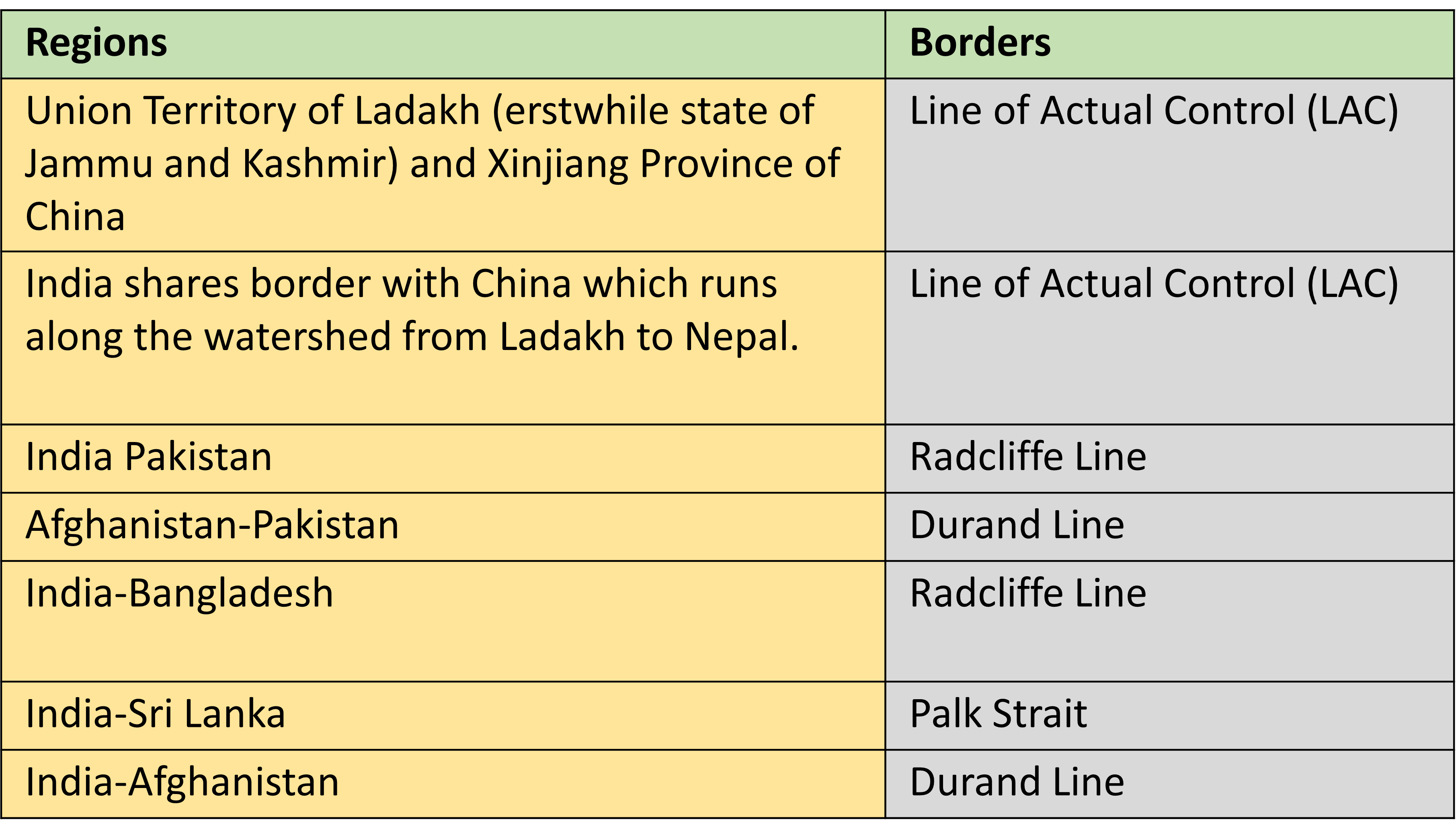
Source: The Hindu
Image source: Times of India on Twitter
Legislations on marriage of women
-
- Context: Recently National Commission for Women moved SC to raise the minimum age of marriage for Muslim women.
- In India, a marriage can be registered under:
- Hindu Marriage Act, 1955
- Muslim Marriage Act, 1954 or
- Special Marriage Act, 1954
The Special Marriage Act, of 1954
- It states the provision for civil marriage for the people of India and all Indian nationals in foreign countries, irrespective of religion or faith followed by either party.
- Under this Act, people from different backgrounds are allowed to get married which shows liberal characteristics.
- It lays down the procedure for both solemnization and registration of marriage, where either of the husband or wife or both are not Hindus, Buddhists, Jains, or Sikhs.
Muslim Marriage Act, 1954
- Interfaith marriage is prohibited under this law.
- The marriageable age of women is 15 years.
Prohibition of Child Marriage Act, 2006
- The minimum age of marriage is 21 years for males, and 18 years for females.
- It prohibits the solemnization of child marriage and provides relief to victims and enhances punishment for those who abet, promote or solemnise such marriages.
- Article 21 of the Indian Constitution: a person has the right to live a dignified life with a person of one’s choice.
Source: The Hindu
ASEAN Consensus - Edukemy Current Affairs
-
-
- Why in news?
Indonesian Foreign Minister stated that India and other countries should respect and follow ASEAN’s policy on Myanmar.


Source Link: The Hindu
-
Assam Movement - Edukemy Current Affairs
-
-
-
Why in News?
- Union Minister of Ports, paid tributes to those who laid down their lives during the historic Assam Movement (1979-1985), at an event marking ‘Swahid Diwas’.
About Assam Movement

-
- The Assam Movement(1979–1985) was a popular uprising in Assam, which demanded the Government of India detect, disenfranchise and deport illegal aliens.
- It is also known as Anti-Foreigners Agitation.
- It was led by the All Assam Students Union (AASU) and All Assam Gana Sangram Parishad (AAGSP).
- It was a six-year period of consistent civil disobedience campaigns, political instability and widespread ethnic violence (Nellie massacre, 1983).
- The movement came to an end in 1985 with the Assam Accord.
Content Source Link: The Indian Express
-
-
G-20 Finance Track - Edukemy Current Affairs
-
-
-
Why in News?
- Bengaluru will host the first G20 Finance and Central Bank Deputies (FCBD) meeting that will have discussions on the Finance Track agenda under the Indian G20 presidency and will be hosted jointly by the Ministry of Finance and the Reserve Bank of India (RBI).
- The finance track is led by Finance Ministers and Central Bank Governors of G20 countries.
- It provides an effective forum for global economic discourse and policy coordination. It’ll focus on managing global debt vulnerabilities, advancing financial inclusion, financing for climate action and SDGs etc.
- Another track under G20 is the sherpa track which oversees negotiations, and discussion agenda and coordinates substantive work.
Content Source Link: The Indian Express
-
-
‘Vanikaran’ project - Edukemy Current Affairs
Why in News?
- Recently, the Forest department of Kerala in association with Noolpuzha grama panchayat (Wayanad District) has launched the ‘Vanikaran’ (afforestation) project.
About Vanikaran Project
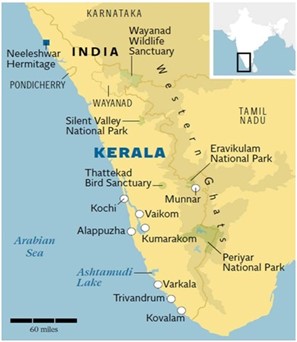
- The project aims to root out invasive plants, especially Senna spectabilis, and restore natural forests.
- It also focuses on other species such as: Eupatorium, Mikania micrantha and Lantana camara.
- According to the data provided by Kerala Forest Research Institute (KFRI), there are around 22 invasive species present in Wayanad Sanctuary.
- Senna spectabilis is very hardy and can survive under extremely challenging situations.
- It produces yellow flowers and can grow 7-18 meters in height.
- It is generally evergreen in climates with rainfall throughout the year, but can become deciduous in some regions.
- As a part of the project, around 7,000 bamboo seedlings and 12,000 saplings of fruit plants, including jamun and gooseberry will be planted.
Content Source Link: The Hindu
End-to-End Encryption - Edukemy Current Affairs
Why in News?
Recently, Apple has introduced three advanced security features focussed on protecting against threats to user.

- End-to-end encryption is a communication process through which the data being shared between two devices is encrypted.
- It helps in preventing third parties like internet service providers (ISPs), cloud service providers and cybercriminals from accessing data while it is being transferred.
- End-to-end encryption is a process that coverts standard text into a format that can only be read by those who have the decryption keys, which are only stored on endpoints and not with any third parties, including companies providing the service.
- This encryption has long been used when transferring business documents, financial details, legal proceedings, and personal conversations.
- Additionally, it may be used to control user authorization for access to stored data, which is what Apple intends to do.
Content Source Link: Apple Inc.
WB: Urban Transport Improvements for Indian Women
Background
World Bank has launched a report “Toolkit on Enabling Gender Responsive Urban Mobility and Public Spaces in India” with the aim of suggesting ways to make public transport in Indian cities more inclusive of women’s travelling requirements.
What are the challenges faced by women in accessing urban mobility?

- Lack of viable urban transport, a dearth of good street lighting, and no reliable last-mile transport are major impediments for women to access better employment opportunities.
- Unsafe transport leads to fewer women travelling out which in turn leads to fewer women out in public spaces which actually makes these spaces even more unsafe.
- Since the burden of unpaid care work lies on women, they often need to plan their travel more meticulously than men, having to juggle various responsibilities at home and work.
- Pink tax:
- Women also face higher costs of travelling because they have to carry out trip chaining where women stitch together various short commutes to fulfil their responsibilities.
- Women often also make decisions to use certain kinds of more expensive routes or forms of transport on account of them being perceived to be safer.
What does the World Bank toolkit suggest?
The World Bank suggests a four-pillared approach to help address prevailing issues for women.
- First, there has to be a greater effort made to understand the on-ground situation with a gender lens.
- Once prevailing issues are identified, policies and development plans must reflect the concerns of women.
- The toolkit emphasizes on building gender sensitivity and awareness among service providers through mandatory programmes and community action.
- Investment has to be made in better infrastructure and services with a focus on women-friendly design.
Some concrete interventions that the toolkit suggests include the creation of wide obstruction-free footpaths, street lighting, dedicated bicycle lanes, the introduction of short and circuitous bus routes, and subsidizing public transport for women.
Source: The Indian Express
Share the article
Get Latest Updates on Offers, Event dates, and free Mentorship sessions.

Get in touch with our Expert Academic Counsellors 👋
FAQs
UPSC Daily Current Affairs focuses on learning current events on a daily basis. An aspirant needs to study regular and updated information about current events, news, and relevant topics that are important for UPSC aspirants. It covers national and international affairs, government policies, socio-economic issues, science and technology advancements, and more.
UPSC Daily Current Affairs provides aspirants with a concise and comprehensive overview of the latest happenings and developments across various fields. It helps aspirants stay updated with current affairs and provides them with valuable insights and analysis, which are essential for answering questions in the UPSC examinations. It enhances their knowledge, analytical skills, and ability to connect current affairs with the UPSC syllabus.
UPSC Daily Current Affairs covers a wide range of topics, including politics, economics, science and technology, environment, social issues, governance, international relations, and more. It offers news summaries, in-depth analyses, editorials, opinion pieces, and relevant study materials. It also provides practice questions and quizzes to help aspirants test their understanding of current affairs.
Edukemy's UPSC Daily Current Affairs can be accessed through:
- UPSC Daily Current Affairs can be accessed through Current Affairs tab at the top of the Main Page of Edukemy.
- Edukemy Mobile app: The Daily Current Affairs can also be access through Edukemy Mobile App.
- Social media: Follow Edukemy’s official social media accounts or pages that provide UPSC Daily Current Affairs updates, including Facebook, Twitter, or Telegram channels.

